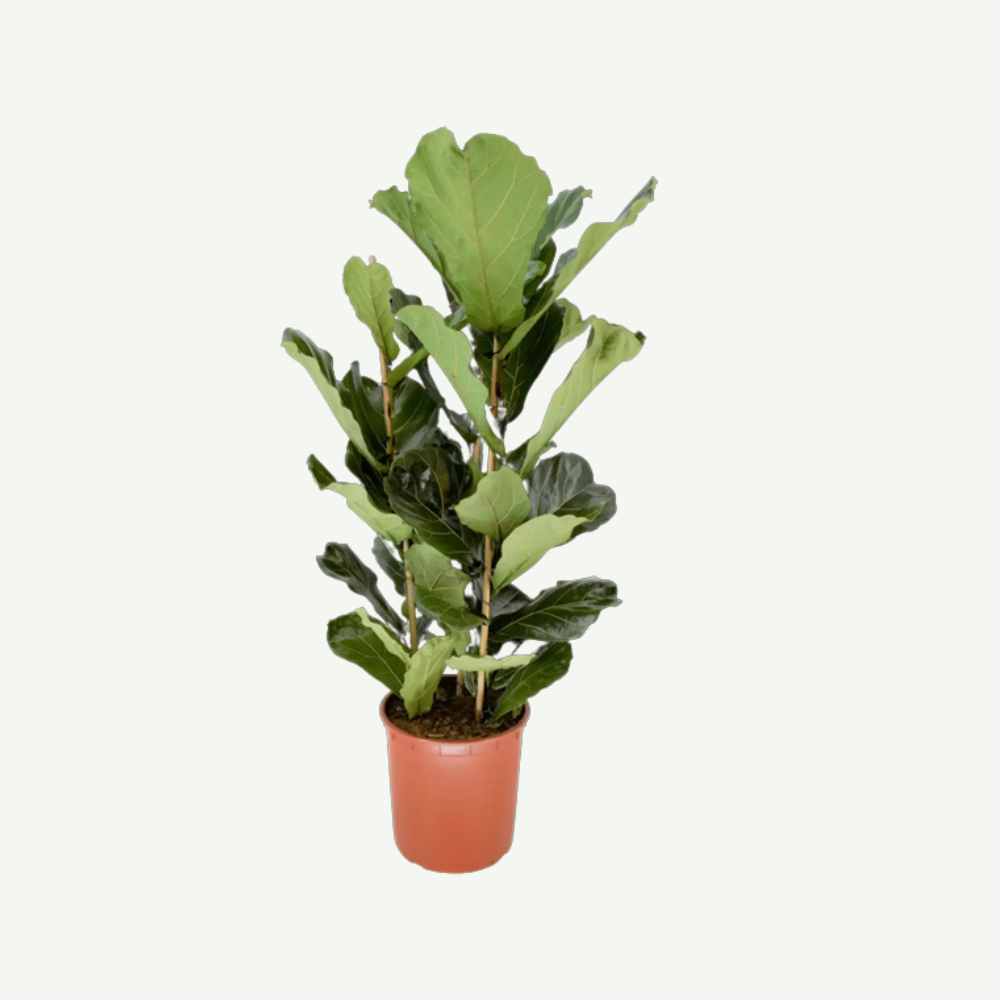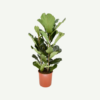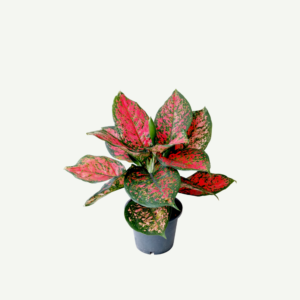Ficus lyrata, commonly known as the Fiddle-leaf Fig, is a popular and iconic indoor houseplant from the Moraceae family. Native to the tropical regions of West Africa, particularly in Cameroon, this plant has gained tremendous popularity for its large, distinctive, and violin-shaped leaves, which give it its common name “Fiddle-leaf Fig.” It is highly valued for its striking appearance and ability to add a touch of elegance and drama to interior spaces.
Care of Ficus lyrata:
Light: Ficus lyrata prefers bright, indirect light. It thrives in well-lit areas but should be protected from direct sunlight, which can scorch its leaves. Placing it near a bright window with filtered light is ideal.
Temperature: These plants thrive in average room temperatures between 65°F to 75°F (18°C to 24°C). They are sensitive to cold drafts and temperature fluctuations, so it’s essential to keep them away from cold windows or air conditioning vents.
Watering: The Fiddle-leaf Fig prefers to be kept evenly moist but not waterlogged. Allow the top inch of the soil to dry out before watering again. Overwatering can lead to root rot, while underwatering may cause the lower leaves to drop.
Humidity: Ficus lyrata appreciates higher humidity levels, which mimic its tropical origin. Regular misting or placing a humidity tray nearby can help increase humidity levels.
Soil: A well-draining and rich potting mix is suitable for the Fiddle-leaf Fig. A mix of regular indoor plant potting mix with some perlite or sand for added drainage works well.
Fertilization: Fertilize Ficus lyrata during the active growing season (spring and summer)
with a balanced, diluted liquid fertilizer every 2-4 weeks.
Characteristics of Ficus lyrata:
Leaves: The most distinctive feature of the Fiddle-leaf Fig is its large, leathery, and glossy leaves, which are shaped like a violin or a fiddle. The leaves are dark green and deeply veined, creating a striking contrast against the light-colored veins. As the plant matures, new leaves emerge from the center in a characteristic curled shape, unfurling into the classic fiddle-shaped form.
Size: Ficus lyrata can grow to impressive heights indoors, typically reaching 3 to 6 feet (1 to 2 meters) or more, depending on the conditions. In its native habitat, it can grow much larger, up to 40 feet (12 meters) tall.
Growth Habit: The Fiddle-leaf Fig has an upright and bushy growth habit, with a single or multiple stems arising from the soil. As the plant grows, it may develop aerial roots along the stem, which is typical of many ficus species.
Landscape use of Ficus lyrata:
Shaded Garden Beds: In regions with a mild or tropical climate, you can plant Ficus lyrata in shaded or partially shaded garden beds. Its striking, large leaves and elegant appearance can add a touch of lushness and sophistication to shaded garden areas.
Understory Plant: In gardens with taller trees or shrubs, this plant can be used as an understory plant. It thrives in the filtered light conditions beneath taller vegetation, adding a tropical and exotic feel to the lower layers of the garden.
Container Gardens: Plant Ficus lyrata in large pots or decorative containers to place on patios, decks, or in courtyard gardens. Its impressive foliage makes it a captivating focal point in outdoor living spaces.
Accent Plant: Use this plant as an accent plant in garden beds, along walkways, or near water features. Its unique and elegant leaves can draw attention and add a touch of beauty to the landscape.
Indoor/Outdoor Transition Areas: Place this plant in covered outdoor spaces like verandas or screened-in porches, where it can thrive in a sheltered environment while providing a bridge between the indoor and outdoor living areas.
Educational Gardens: This plant can be used in botanical gardens, public parks, or educational institutions to educate visitors about the diversity of plant species and to showcase its striking appearance and adaptability.
When incorporating this plant into landscape or garden designs, it’s important to consider the local climate. While it can thrive outdoors in mild and tropical regions, it’s not suitable for areas with frost or extreme cold. Ensure that the planting area has well-draining soil and provides protection from strong winds and excessive sun exposure, as Ficus lyrata prefers indirect or dappled light and can be sensitive to harsh conditions.
Additionally, regular watering, maintaining adequate humidity, and protecting the plant from pests are key aspects of its care when used in landscape settings. This plant is known for its impressive appearance and can add a touch of elegance, lushness, and a tropical ambiance to your outdoor spaces in the right climate.
For more details visit our website and can have a look on our indoor and outdoor plants
Overall, Ficus lyrata, or the Fiddle-leaf Fig, is a stunning and attention-grabbing houseplant that can become a statement piece in any indoor setting. Its large, violin-shaped leaves and elegant growth habit make it a beloved choice for interior decorators and plant enthusiasts seeking a striking and eye-catching plant for their indoor spaces.






